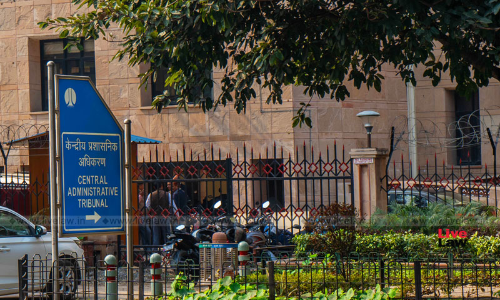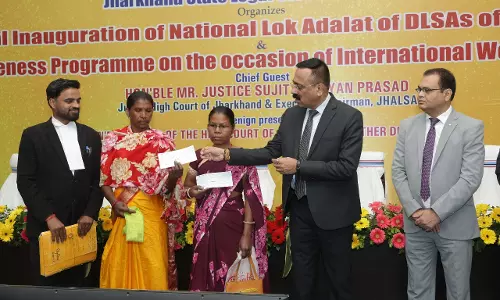Copyright Protection Given To Films Is At Par With That Accorded To Literary Works: Delhi HC [Read Judgment]
![Copyright Protection Given To Films Is At Par With That Accorded To Literary Works: Delhi HC [Read Judgment] Copyright Protection Given To Films Is At Par With That Accorded To Literary Works: Delhi HC [Read Judgment]](https://www.livelaw.in/h-upload/images/1500x900_copyright.jpg)
Delhi High Court has clarified the position of law on the issue of copyright infringement of a cinematograph film by making various observations. The court interpreted sections 13, 14(d) and 2(d) of the Copyright Act to hold that the copyright protection of a film is at par with that accorded to literary works and its scope is wider than just duplication. The present petition was moved on...
Delhi High Court has clarified the position of law on the issue of copyright infringement of a cinematograph film by making various observations. The court interpreted sections 13, 14(d) and 2(d) of the Copyright Act to hold that the copyright protection of a film is at par with that accorded to literary works and its scope is wider than just duplication.
The present petition was moved on the ground that the respondent has copied the advertisement of the petitioner which amounts to a copyright violation as an advertisement constitutes a 'cinematograph work' under Section 2(f) of the Copyright Act, 1957.
Therefore, the court had to rule upon the following questions of law:
1.Whether in a suit for copyright infringement of a cinematograph film, the infringing copy has to be an exact copy made by a process of duplication or a substantial/material copy.
2.Whether the copyright infringement test as laid down in R.G. Anand v. M/s Deluxe Films and Ors. (1978) 4 SCC 118 with regard to literary works is applicable to cinematograph film
3.Whether the expression to make a copy of the film' means just to make a physical copy of the film by a process of duplication or does it refer to another work which substantially, fundamentally, essentially and materially resembles the original film.
The counsel for the petitioner argued that the defendant‟s advertisement contained material and broad similarities which showed that the defendant‟s intent was to copy the plaintiff‟s advertisement. He stated that the coincidences which appeared in the two advertisements were neither incidental nor based on mere chance. Further, he relied on the apex court's ruling in RG Anand which held that an infringing copy need not be an exact copy but a substantial and material one. 'In a suit for copyright infringement of a cinematograph film the test is of an overall impression of an average viewer and not a microscopic analysis which underscores differences/divergences', he contended. Article 14 is of the Berne Convention was also cited which states that the owner of a copyright in a cinematographic work shall enjoy the same rights as the author of an original work.
Meanwhile, the defendant's counsel contended that upon a conjoint reading of Sections 2(m)(ii), 14(d)(i) and 51 of the Act, 1957, it was apparent that to establish copyright infringement in a cinematograph film, it was essential to show that the impugned work was an actual copy of the plaintiff‟s advertisement/cinematograph film.The expression 'to make a copy of the film' meant to make a physical copy of the film itself and not another film which merely resembled the original film.
In reaching its judgement, the court made the following observations:
1. Copyright subsists in a cinematograph film as a work independent of underlying works that come together to constitute it. Further, though the copyright subsists in the constituent parts, yet the copyright vests separately and independently in the composite whole
2. A film is recognized as being more or greater than the sum of its parts
3. Though the expression 'original' is missing in section 13(1)(b), yet the requirement of originality or intellectual creation is brought in through sections 13(3)(a) and 2(d)
4. The expression 'to make a copy of the film' in section 14(d)(i) does not mean just to make a physical copy of the film by a process of duplication. Further, as the scope of the protection of a film is at par with other original works, the test laid down in RG Anand would apply. Accordingly the court will have to compare 'the substance, the foundation, the kernel' of the two films/advertisements to consider whether one was 'by and large a copy of the other'
5. Bombay High Court judgment in Star India Pvt Ltd v. Leo Burneet (India) Pvt Ltd not only gives a restricted and narrow interpretation to the rights of the copyright owner in a cinematograph film, but is also not in consonance with the Berne Convention inasmuch as it does not protect a cinematograph work as an original work
6. Where India is a party to an International Treaty, the statute would be given a purposive construction in favour of the treaty. Consequently, the 1957 Act needs to be interpreted in consonance with the Berne Convention which states that a cinematographic work is to be treated as an original work and the owner of copyright in a cinematographic work shall enjoy the same rights as the author of an original work
Despite making the aforesaid observations, the court went on to deny any interim order to the plaintiff. It opined that, on applying the test laid down in RG Anand, the two advertisements are neither substantially nor materially or essentially similar.
Click Here To Download Judgment
[Read Judgment]




